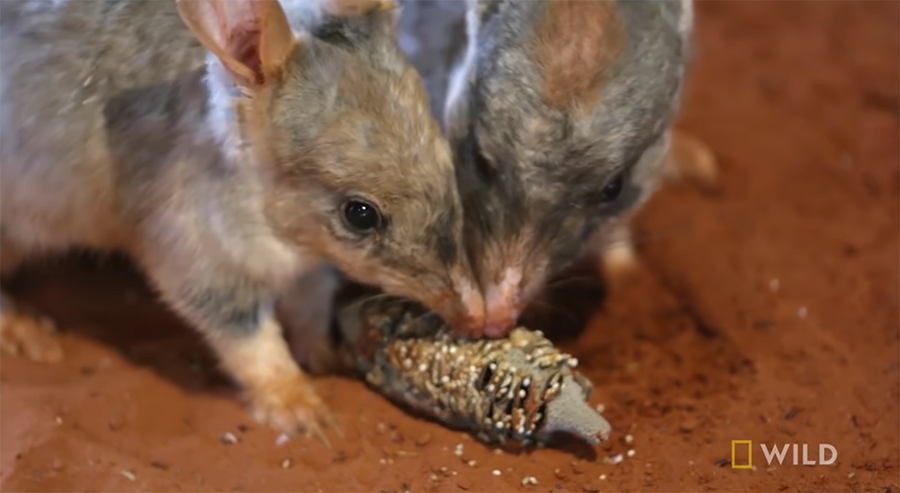Bilbies or rabbit-bandicoots are desert-dwelling marsupials that are known as ‘ecological engineers’ of the Australian bush because of the amount of soil they turnover—”up to 3.6 tonnes of soil per kilogram of body mass in a year!”
Soil turnover brings deep soils and their nutrients to the surface. Their diggings also trap organic matter and other materials, increasing nutrient availability to the plants.

In this keeper talk from Sydney’s Taronga Zoo, host Hayden Turner chats with Taronga keeper Grace Black about their bilby ambassadors. Topics include the animals’ long ears, sharp claws, backward pouch, short gestation period (14 days), and the threats they face in the wild. From Taronga:
Bilbies have an amazing ability to survive in a wide range of habits and were once found on 70% of the Australian mainland… Its diet includes bulbs, fruit, seeds, fungi, insects, worms, termites, small lizards and spiders. One of its favourite plant foods is the bush onion or yalka which grows in desert sand plains after fires. Bilbies don’t need to drink water regularly because, like the koala, they get most of their moisture from their food. This makes the Bilby well adapted for survival in the semi-arid and arid areas of Australia.
For daytime shelter, the bilby constructs a deep and long burrow system. Being a powerful digger, it is able to make spiral-shaped burrows up to 3 metres long and up to 2 metres deep. Predators attempting to dig an animal out often find it very difficult to locate any bilbies who will frantically extend the burrow at the closed end. Usually, the depth allows safety for the bilby from predators as well as providing daytime protection from the heat…

From the arid interior of Australia to the temperate coastal areas, bilbies were common. But this was a hundred years ago. Today, changes in their habitat have seen their range reduced and their status listed as ‘vulnerable’. They are now in competition with introduced animals and the demand for agricultural land. Sheep and cattle graze on the same plants as do rabbits, while foxes and feral cats have become predators. Even changing fire patterns have contributed to their demise in certain areas due to the impact on the type and availability of their food sources. This has led to only isolated populations surviving in pockets of arid regions throughout Australia.
As a part of their conservation efforts, Taronga has created a 110-hectare predator-free bilby breeding site at their Western Plains Zoo in Dubbo. This May 2021 update with keeper Suzie Lemon shares a few views of the new habitat.
Enjoy more Australian zoo visits on TKSST, including:
• Baby echidna at Taronga Wildlife Hospital
• The “Laughing” Kookaburra
• Up close with Gem the common wombat
• Matilda the echidna’s allergy to ants
• Baby meerkats scamper at the Symbio Wildlife Park
Curated, kid-friendly, independently-published. Support this mission by becoming a sustaining member today.


